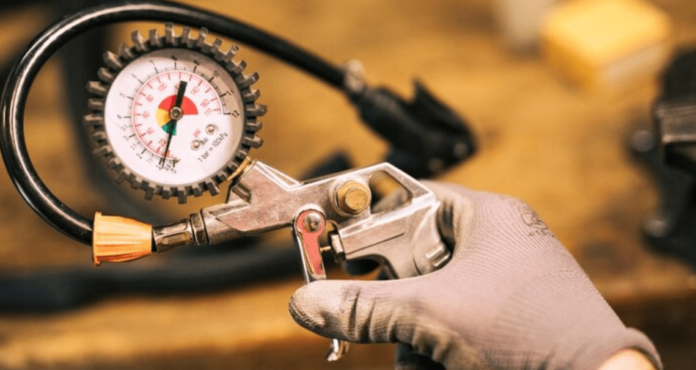Essential tools for measuring pressure in a vacuum setting are vacumetros, often known as vacuum gauges. In many scientific, industrial, and technological applications where precise pressure measurements are required, they are indispensable. The correct monitoring of vacuum levels is crucial in activities ranging from manufacturing to research and development. The types, uses, and significance of vacuómetros in contemporary technology are examined in this article.
Table of Contents
What is a Vacuómetro?
An instrument used to gauge the pressure inside a vacuum system is called a vacumetros. A space where the pressure is far lower than the atmospheric pressure is referred to as a “vacumetros“. In order to make sure that the circumstances are suitable for a certain process, vacuumometers are used to measure the amount of this decreased pressure. These instruments are available in numerous configurations, each intended to measure a distinct range of vacuum pressures. The degree of vacuum and the level of precision needed for the application determine which vacuómetro is best.
Types of Vacuómetros
Based on how they operate and the range of vacumetros pressures they measure, vacuumometers can be categorized. The most typical kinds consist of:
1. Mechanical Vacuómetros
Physical parts that change shape in response to pressure changes, such as diaphragms, springs, or capsules, are used by mechanical vacumetros cleaners. Low and medium vacuum levels are usually measured with these devices. Mechanical vacuómetros include, for example:
- Gauges known as Bourdon tubes employ a coiled tube that straightens when subjected to pressure. The movement of the tube is then translated into a legible value on a dial.
- Diaphragm gauges: These gauges get a direct reading of the vacuum pressure by using a thin membrane that flexes or bends in response to variations in vacuum pressure.
- Mechanical vacuómetros are sturdy and easy to use, making them suited for industrial applications where durability is a vital aspect.
2. Thermal Conductivity Vacuómetros
These vacumetros work on the tenet that when a vacuum’s pressure lowers, a gas’s thermal conductivity falls as well. Gauges of thermal conductivity mostly come in two varieties:
- The resistance of a heated wire used in Pirani gauges varies according to the surrounding gas pressure. The capacity of the gas to disperse heat diminishes with increasing vacuum, which causes variations in the resistance and temperature of the wire.
- Thermocouple gauges: These instruments measure the temperature of a heated element and, like Pirani gauges, their variations in temperature signify the degree of vacuum.
- The sensitivity and dependability of thermal conductivity vacuómetros make them valuable for medium to low vacuum measurements.
3. Ionization Vacuómetros
High vacumetros levels, or extremely low pressures, are measured with ionization vacuum meters. They work by ionizing the gas molecules in a vacuum and then monitoring the current that is created as a result of the ions’ movement. There are two primary types:
- Cold Cathode Gauges (Penning Gauges): These gauges ionize the gas molecules by trapping electrons in a magnetic field. The vacuum pressure determines the ion current that results.
- Hot Cathode Gauges (Bayard-Alpert Gauges): In these gauges, a heated filament generates electrons that ionize the gas. The vacuum level is ascertained by measuring the produced ion current.
- When exact measurements of extremely high vacuums are needed for scientific investigation, ionization vacuumometers—which are very sensitive—are frequently employed.
Applications of Vacuómetros
Vacumetros are widely used in many different sectors, such as:
1. Industrial Processes
Maintaining a controlled vacuum environment is essential in sectors such as food packing, pharmaceutical manufacture, and semiconductor fabrication. In order to guarantee both process efficiency and product quality, vacuummetros are used to monitor and control the vacuum levels in these operations.
2. Scientific Research
In labs and research centers where specialized vacuum conditions are needed for studies, vacuummetros are indispensable instruments. They are employed in the research of material behavior in low-pressure settings in disciplines including chemistry, materials science, and physics.
3. HVAC Systems
Vacuómetros are used in HVAC systems (heating, ventilation, and air conditioning) to check and validate vacuum levels while refrigerated lines are being evacuated. This guarantees that the system is completely free of moisture and air, which is essential to its durability and effectiveness.
4. Automotive Industry
In automotive applications, vacuumometers are frequently utilized, especially for testing and troubleshooting engine vacuum systems. They aid in the diagnosis of problems with air intake, fuel systems, and other parts that depend on vacuum pressure for proper operation.
Importance of Accurate Vacuum Measurement
Sustaining the integrity of equipment and processes requires precise vacuum measurement. Inadequate vacuum levels may result in defective goods, ineffective machinery, and even potential safety risks. In industrial and scientific contexts, vacuumómetros guarantee the achievement and maintenance of the correct vacuum conditions, avoiding expensive mistakes and downtime.
Advances in Vacuómetro Technology
Digital gauges that are easier to use and offer more accurate readings are the result of recent developments in vacuómetro technology. These contemporary gadgets are more functional and efficient in a variety of applications thanks to features like data logging, remote monitoring, and interaction with computerized control systems.
Conclusion
Vacumetros are essential for measuring and managing Vacumetros conditions in a variety of scientific domains and industry applications. The precision and dependability of their pressure measurements are crucial for preserving the effectiveness and security of procedures that rely on particular vacuum levels. Comprehending the various varieties of vacuum cleaners and their uses facilitates the process of choosing the appropriate instrument for the task, so bolstering technical progress and industrial processes. The capabilities of Vacumetros will advance along with technology, making them essential instruments in both the scientific and industrial realms.





